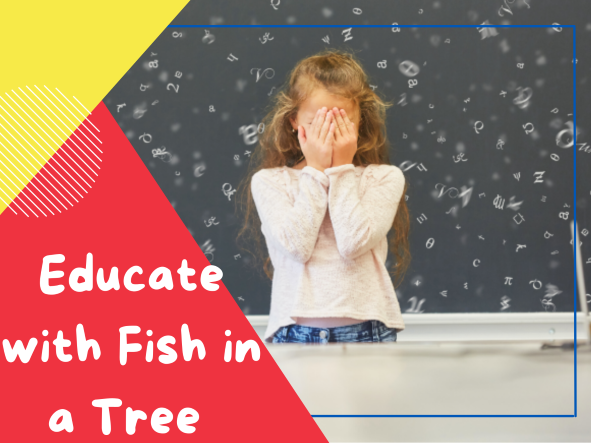Educate with Fish in a Tree
We have all had times when we want to give up. We want to quit trying because it just does not seem worth it anymore. Or maybe, it’s that we do not believe we are worth it.
And we have all seen someone else struggling to keep going. We have looked at people and thought If you just hold on, you’ll make it!
In her book Fish in a Tree, author Lynda Mullaly Hunt accurately captures both sides of this issue. Her high-quality writing and inspiring characters make this book the perfect choice for the classroom or, even, a casual read.
Fish in a Tree revolves around a sixth-grader with dyslexia trying to fit in the world but refusing to ask for help to do it. It is a great reminder that we are all misfits in society and that every problem can be overcome with hard work.
A Simple Plot
When I began reading this book, I was completely startled. After reading so many complex works for my English classes, this book was beautifully simple. There is no hidden meaning. There are no complex explanations.
However, it is incredibly relatable. Although dyslexia is not something everyone deals with, Ally’s fight to overcome it is relatable on multiple levels. Everyone relates to struggling and feeling like no one is there to help. Fish in a Tree teaches us to reach out and ask for help.
Mr. Daniels
By far, my favorite character is Mr. Daniels. He sees Ally’s struggle and notices that he needs to help her. He finds ways to accommodate Ally’s problems and works with her where she is. He recognizes the signs and strengths of dyslexia and seeks to help her see herself in a more positive light.
Like many teachers, Mr. Daniels is most concerned with individual student well-being. He advocates for Ally when no one else will. With all the stress on student performance, students need someone who listens and speaks up for them. As Mr. Daniels does this for Ally, her classroom behavior changes, and she begins to excel in academics.

Like all teachers, Mr. Daniels is not perfect. He is human, and he messes up in his attempts to help Ally. We have all felt Ally’s struggles, but, I believe, we have all tried to be Mr. Daniels, too.
We look for the best way to intervene in unfortunate situations. However, it does not always go the way we want it to. Mr. Daniels did not give up. Neither should you!
Student readers connect with Ally’s struggles to fit in and be admired. Adult readers connect with Mr. Daniels to better understand the psychology behind a student’s academic struggles.
Mr. Daniels tries to help all of his students, not just Ally. He sees everyone’s great potential and works with them to develop their unique capabilities. He also recognizes every student in the classroom faces challenges.
Positive Messages
Ally’s showdown with the bully is anticlimactic. However, the messages taught in the exchange are needful for students and teachers.
When the bully is alone and shunned, Ally reaches out to offer her newly discovered group friendship. In a perfect world, the bully would have apologized and become best friends with Ally. But, the world is not perfect.
The bully (quite rudely) turns down Ally’s genuine offer. While this makes Ally sad, she has a revelation. The bully’s actions have no reflection on her. She reached out. She did what a good person would do. But Ally cannot make someone like her. So, she does not need to feel guilty for how the relationship ended.

This is important for students across all grade levels to remember because arguments happen. Students do not need to feel bad when they have done their best with good intentions to make something work. Everyone is entitled to their own opinions and choices, and we have no control over some outcomes. We can only control our reactions to them.
It is an important reminder for teachers as well. In Fish in a Tree, Ally accepts Mr. Daniels’ help. Not every student will. That’s okay. Keep trying, keep advocating for your students. Do not be discouraged because one situation did not end the way you wanted it to. There is always another student who needs your help and the strength you offer.
What Can Teachers Do to Help Dyslexic Students?
You became a teacher because you want to educate and inspire students. Learning about and recognizing the strengths of dyslexia students is the first step to helping them succeed in your classroom. Students with dyslexia are big picture thinkers, creative, empathic, and good problem solvers.
Often dyslexia students are bright. A child’s disruptive and distractive behavior (especially during a segment of the day) may be an initial indicator.
The best interventions for dyslexia students are to provide an inclusive classroom with a structured literary approach. Consistent and reliable routines, clear schedules, multisensory presentations, and assistive teaching technologies assist students who struggle with the letters flipping and moving around on a page.
Accommodations may uniquely benefit these students. They may need additional time on paperwork and exams or the use of ‘OK Google’ for spelling. Popcorn or other out loud classroom reading puts these students in high-stress mode.
Teacher Power Energy Drinks
Working with kids all day is exhausting. Boost your energy and stimulate your mind to be at the top of your teaching game with Teacher Power Energy Drinks.

Teacher Power Energy Drinks come in six delicious flavors. All are sugar-free and budget-friendly. Get off those unhealthy sodas and popular energy drinks. Forget those expensive coffees. Teacher Power is here to save the day.
See our website or purchase Teacher Power Energy Drinks on Amazon.com.
By: Lela J. Haroldsen
The content of Teacher Power’s website is for information only, not advice or guarantee of outcome. Information is gathered and shared from reputable sources; however, Teacher Power is not responsible for errors or omissions in reporting or explanation. No individuals, including those taking Teacher Power products, should use the information, resources or tools contained within to self-diagnosis or self-treat any health-related condition. Teacher Power gives no assurance or warranty regarding the accuracy, timeliness or applicability of the content.
References
“Helping Kids See Beyond Their Failures: A Chat with Fish in a Tree Author Lynda Mullany Hunt.” Brightly. https://www.readbrightly.com/chat-with-fish-in-a-tree-author-lynda-mullaly-hunt/
“Top Teaching Strategies for Students with Dyslexia.” The Dyslexia Resource. 2020. https://dyslexiaresource.org/top-teaching-strategies-for-students-with-dyslexia/
Cole, Chris. "Strengths of Dyslexia.” Dyslexia Support South. 2019. https://www.dyslexiasupportsouth.org.nz/parent-toolkit/emotional-impact/strengths-of-dyslexia/

